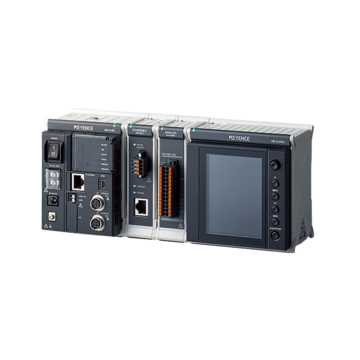Data Acquisition (DAQ)
Difference Between Data Loggers vs Data Acquisition
-
Tags:
- Data Acquisition
Understanding the difference between data loggers and data acquisition (DAQ) systems is important when selecting the right solution for measurement and analysis. While both technologies collect and store data, their capabilities, performance, and applications can vary significantly.
Data Logger vs DAQ System: Side-by-Side Comparison
Understanding the difference between data loggers and data acquisition (DAQ) systems is important when selecting the right solution for measurement and analysis. While both technologies collect and store data, their capabilities, performance, and applications can vary significantly.
Feature
Type Symbol
|
Data Logger
+ Electrode
|
DAQ System
− Electrode
|
|---|---|---|
Sampling Rate
Feature
Sampling Rate
|
Data Logger
Low (1-100 S/s)
|
DAQ System
High (100K-1M S/s)
|
Data Storage
Feature
Data Storage
|
Data Logger
Internal memory, USB, SD cards
|
DAQ System
High-capacity SSDs
|
Real-Time Monitoring
Feature
Real-Time Monitoring
|
Data Logger
Limited
|
DAQ System
Yes
|
Power Source
Feature
Power Source
|
Data Logger
Battery-powered
|
DAQ System
Flexible power: External AC/DC or rechargeable battery
|
Applications
Feature
Applications
|
Data Logger
Long-term monitoring (temperature, humidity, energy use)
|
DAQ System
High-speed testing (vibration analysis, biomedical research)
|
Cost
Feature
Cost
|
Data Logger
Low ($100-$3,000)
|
DAQ System
High ($4,000 - $30,000)
|
We’re here to provide you with more details.
Reach out today!

Key Differences Between Data Loggers & DAQ Systems
Sampling Rate & Speed
One of the fundamental differences between data loggers and DAQ systems is their sampling rate and speed. Data loggers are a good choice for low-frequency measurements and typically capture 1 to 100 samples per second. A DAQ system is significantly faster, recording signals at a rate ranging from 100,00 to 1 million samples per second.
Data Storage & Accessibility
Storage capacity and accessibility also differ between these two systems. Data loggers, like the KEYENCE Data Logger NR-500, typically rely on non-volatile memory (NVRAM), SD cards, or USB drives for data storage. DAQ systems, in contrast, are built to store data on high-capacity SSDs as they handle high-speed, high-volume data acquisition.
Real-Time Monitoring & Control
When it comes to real-time monitoring and control, the different types of data loggers primarily function as passive recording devices; they capture data over time but do not actively analyze or respond to collected information. In contrast, DAQ systems continuously monitor and process incoming signals while providing instantaneous alerts and control outputs when conditions deviate from expected parameters.
Power Consumption & Energy Efficiency
Power requirements are another major distinction. Data loggers, like the Data Logger NR-X Series, are designed to be energy efficient with many models running on battery power for weeks at a time. Depending on the application, DAQ systems have higher power demands due to their continuous operation and high-speed processing and typically require an external AC/DC power source.
Get detailed information on our products by downloading our catalog.
View Catalog

Applications & Industry Use Cases
Common Applications for Data Loggers
- Food Safety & Compliance: Data logging tracks temperature in cold chain logistics to prevent spoilage and maintain regulatory compliance.
- HVAC & Environmental Monitoring: Records temperature and humidity over time to optimize HVAC performance and maintain air quality.
- Energy Monitoring: temperature also monitors power consumption in manufacturing to improve efficiency and prevent electrical failures.
Common Applications for DAQ Systems
- Automotive Testing: Captures engine performance, fuel injection rates, and crash test impact forces in real time.
- Aerospace & Defense: Monitors structural stress, vibration, and aerodynamic forces in aircraft and defense systems.
- Biomedical Research: Records EEG, ECG, and MRI scan data for medical diagnostics and biomechanical studies.
Understanding the difference between data loggers and DAQ systems makes it easier to make informed decisions about data collection and analysis. Whether you need long-term monitoring or real-time insights, KEYENCE has experts standing by to help you with your data acquisition needs. Contact us today for more information on data logging!
Contact us to learn more about how our advanced technology can help take your business to the next level.
Contact Us


